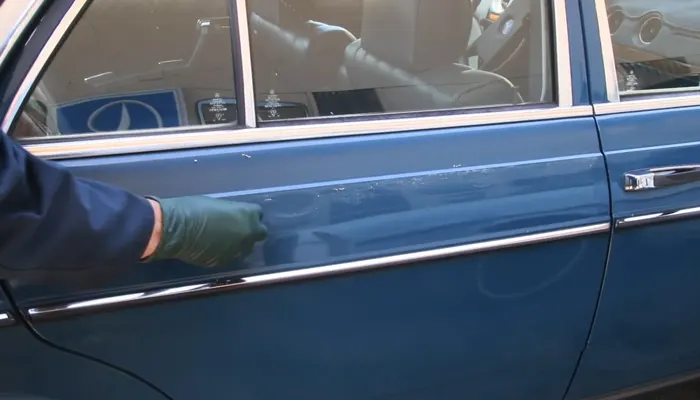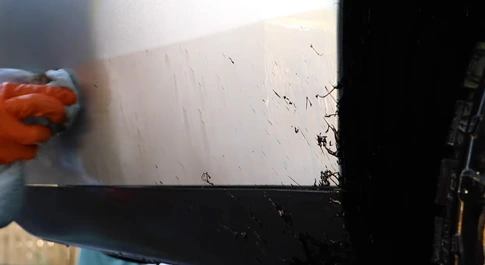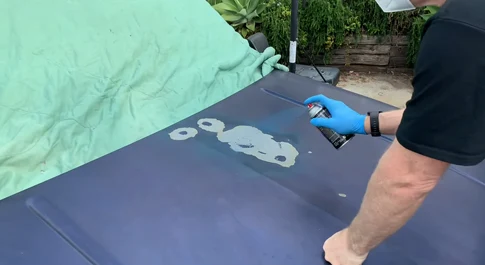Physical Address
304 North Cardinal St.
Dorchester Center, MA 02124
Physical Address
304 North Cardinal St.
Dorchester Center, MA 02124

Maintaining the appearance and functionality of your vehicle’s exhaust system is crucial for both aesthetics and performance. Over time, exhaust system paint can deteriorate due to extreme temperatures and environmental factors, resulting in peeling paint and rust, which will need to be removed.
Prepare the area of your vehicle exhaust by cleaning it thoroughly. Identify the type of paint used on the exhaust. Use chemical paint stripping products to remove the paint. Scrape off any remaining paint using a scraper or sandpaper.
Here, we’ll discuss the step-by-step process of removing vehicle exhaust paint using simple techniques. Get ready to give your exhaust system a fresh new look.

Whether your vehicle has a single or dual exhaust, the process for removing exhaust paint is the same. To remove vehicle exhaust paint, you need to follow a step-by-step process.
To properly prepare for removing vehicle exhaust paint, you must gather your materials and ensure a well-ventilated workspace. Wear protective gear, including gloves, safety goggles, and a face mask, to safeguard yourself from harmful chemicals and particles. This is crucial for your safety.
Next, cover the area beneath the exhaust with a tarp or plastic sheet to catch any loose paint and debris. This will help to prevent any mess and make the cleanup process easier. Remember, a well-prepared workspace is essential for a successful paint removal job.
Taking these measures will ensure that you can work efficiently and safely.
To identify the paint type on your vehicle exhaust, begin by examining the surface and checking for any labels or markings that indicate the type of paint used. Look for information such as brand names, product codes, or paint specifications.
If no labels or markings are present, you can perform a simple test to determine the paint type. Start by applying a small amount of rubbing alcohol or acetone on a cloth or cotton swab and gently rub it on an inconspicuous area of the painted surface. Observe the reaction of the paint.
If the paint smears or comes off easily, it’s likely a lacquer or enamel paint. If the paint remains intact, it may be a more durable type like epoxy or powder coating. Identifying the paint type is crucial for selecting the appropriate removal method.
Apply the chemical paint stripper evenly to the exhaust, covering the entire painted area with the brush or spray bottle. Follow the manufacturer’s recommended wait time, typically indicated on the product label. This allows the stripper to penetrate the paint and break down its adhesion.
Scrape off the loosened paint from the vehicle exhaust using a putty knife or a similar tool. Make sure to apply gentle pressure to avoid damaging the surface of the exhaust.
Start at one end of the painted area and work your way towards the other end. Use short, controlled strokes to remove the paint effectively.
If the paint is still stubborn, you may need to reapply the stripper and let it sit for a few more minutes before attempting to scrape it off again. Be careful not to use excessive force, which could result in scratches or dents on the exhaust.
To completely remove any stubborn traces of paint from your vehicle exhaust, you can follow these steps:
After removing stubborn paint traces from your vehicle exhaust using a fine steel wool pad, carefully rinse and dry the surface to ensure all residue is removed.
To begin, use a hose or bucket of water to rinse the exhaust. Direct the water flow onto the exhaust’s outside surface, covering all areas. This will help wash away any remaining paint particles or chemicals.
Next, use a clean cloth or towel to dry the surface completely. It’s crucial to remove all moisture from the exhaust to prevent rust formation. Wipe the surface gently, paying attention to any crevices or hard-to-reach areas.
Once the exhaust is completely dry, you can proceed with any further steps, such as applying a protective coating or wax.
Once the paint is removed, it’s important to apply a few finishing touches to protect the metal and ensure a professional-looking result.
With these finishing touches, your vehicle exhaust will look brand new and be protected against future damage.

There are several reasons to consider removing the paint from your vehicle exhaust.
Over time, the paint on your exhaust system can deteriorate due to the high temperatures it’s exposed to and environmental conditions. When the paint becomes damaged or peels, it exposes the metal underneath to moisture and oxygen. This exposure creates the perfect conditions for rust formation.
Rust can weaken the exhaust system and lead to leaks or complete failure if left untreated. By removing the old paint and applying a new protective coating, you can effectively prevent corrosion and extend the lifespan of your exhaust system.
The discolored or peeling paint on the exhaust tips can make your car look worn and neglected. By removing the old paint and refinishing the exhaust, you can bring back a sleek and attractive look.
A clean and polished exhaust not only adds to the overall aesthetics of your vehicle but also gives the impression of a well-maintained and cared-for car. It can make a significant difference in the overall appearance and appeal of your vehicle.
To achieve the OEM look for your vehicle’s exhaust, removing the paint is essential in restoring its original appearance. The OEM look refers to the original, unpainted appearance of the exhaust system, which some vehicle owners prefer.
If a previous owner has painted the exhaust, removing the paint is necessary to return it to its stock appearance.
You can remove exhaust paint without chemicals or solvents by employing alternative methods. While using a paint stripper may be more efficient for heat-resistant paint and coating, other options are available.
One method is sanding the painted surface using sandpaper or a sanding block. This can help to remove the paint layer by layer until you reach the bare metal.
Another option is wire brushing, which involves using a wire brush to scrub away the paint. Mechanical tools, such as a rotary tool with a wire brush attachment, can also remove the paint.
However, it’s important to note that these methods may require more effort and time than chemicals or solvents.

Your exhaust system shouldn’t be painted with regular automotive spray paint because it cannot withstand the high temperatures produced by exhaust. Standard automotive paint isn’t designed to handle the extreme heat generated by the exhaust system, which can reach temperatures up to 1200° F.
In these high temperatures, spray paint will peel, bubble, and discolor, compromising the appearance and longevity of your exhaust system. To ensure a durable and long-lasting finish, it’s crucial to use high-temperature paint specifically formulated for exhaust systems.
Removing vehicle exhaust paint is an important task to maintain the appearance and functionality of your exhaust system. While there are chemical and solvent-free methods available, it’s crucial to choose the right approach based on the type of paint and the condition of your exhaust.
Additionally, using regular automotive spray paint on your exhaust system may not be recommended as it may not withstand the high temperatures and cause damage. Therefore, it’s best to consult professionals or follow manufacturer guidelines for the best results.